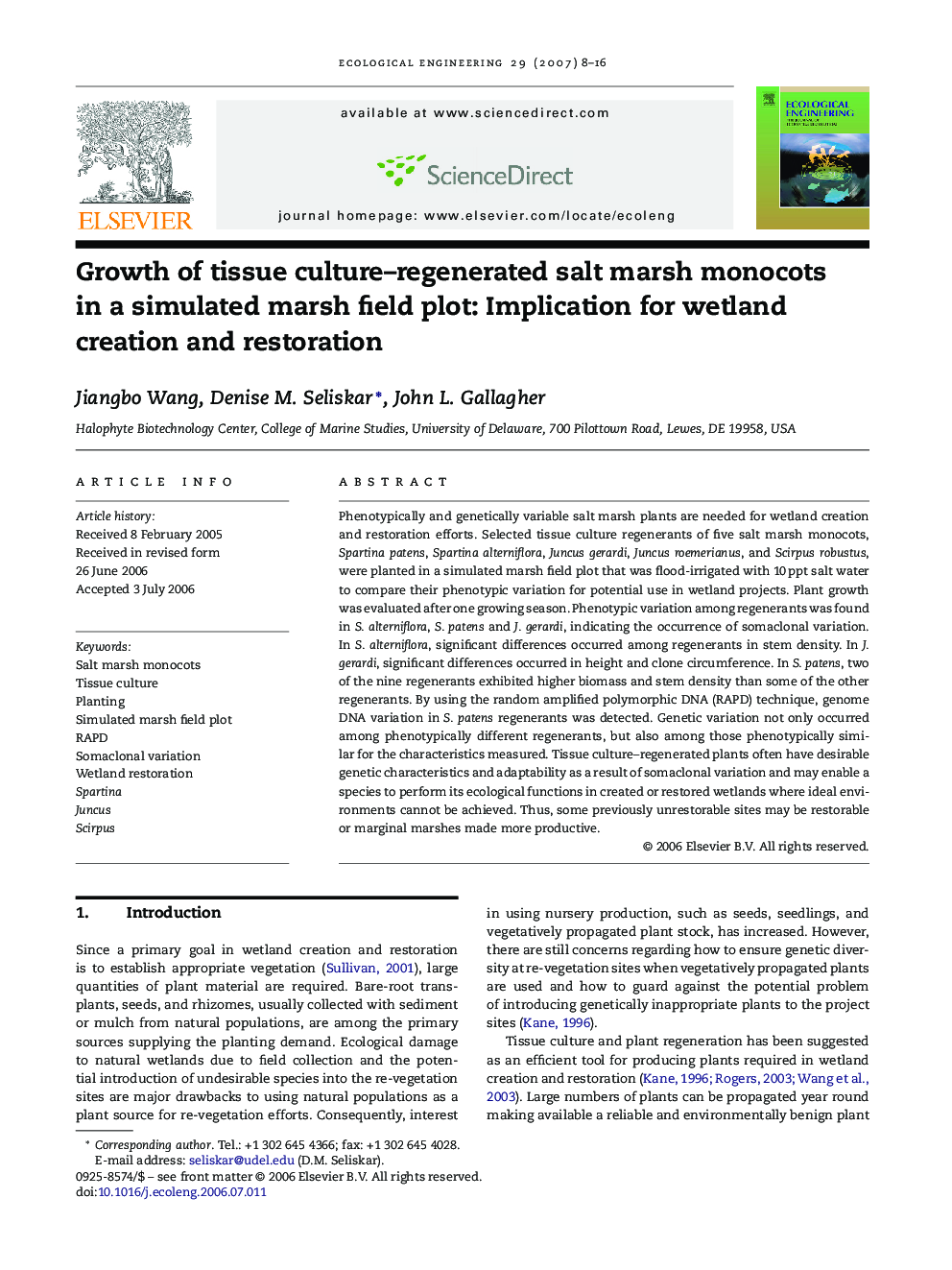| Article ID | Journal | Published Year | Pages | File Type |
|---|---|---|---|---|
| 4391185 | Ecological Engineering | 2007 | 9 Pages |
Abstract
Phenotypically and genetically variable salt marsh plants are needed for wetland creation and restoration efforts. Selected tissue culture regenerants of five salt marsh monocots, Spartina patens, Spartina alterniflora, Juncus gerardi, Juncus roemerianus, and Scirpus robustus, were planted in a simulated marsh field plot that was flood-irrigated with 10Â ppt salt water to compare their phenotypic variation for potential use in wetland projects. Plant growth was evaluated after one growing season. Phenotypic variation among regenerants was found in S. alterniflora, S. patens and J. gerardi, indicating the occurrence of somaclonal variation. In S. alterniflora, significant differences occurred among regenerants in stem density. In J. gerardi, significant differences occurred in height and clone circumference. In S. patens, two of the nine regenerants exhibited higher biomass and stem density than some of the other regenerants. By using the random amplified polymorphic DNA (RAPD) technique, genome DNA variation in S. patens regenerants was detected. Genetic variation not only occurred among phenotypically different regenerants, but also among those phenotypically similar for the characteristics measured. Tissue culture-regenerated plants often have desirable genetic characteristics and adaptability as a result of somaclonal variation and may enable a species to perform its ecological functions in created or restored wetlands where ideal environments cannot be achieved. Thus, some previously unrestorable sites may be restorable or marginal marshes made more productive.
Related Topics
Life Sciences
Agricultural and Biological Sciences
Ecology, Evolution, Behavior and Systematics
Authors
Jiangbo Wang, Denise M. Seliskar, John L. Gallagher,
